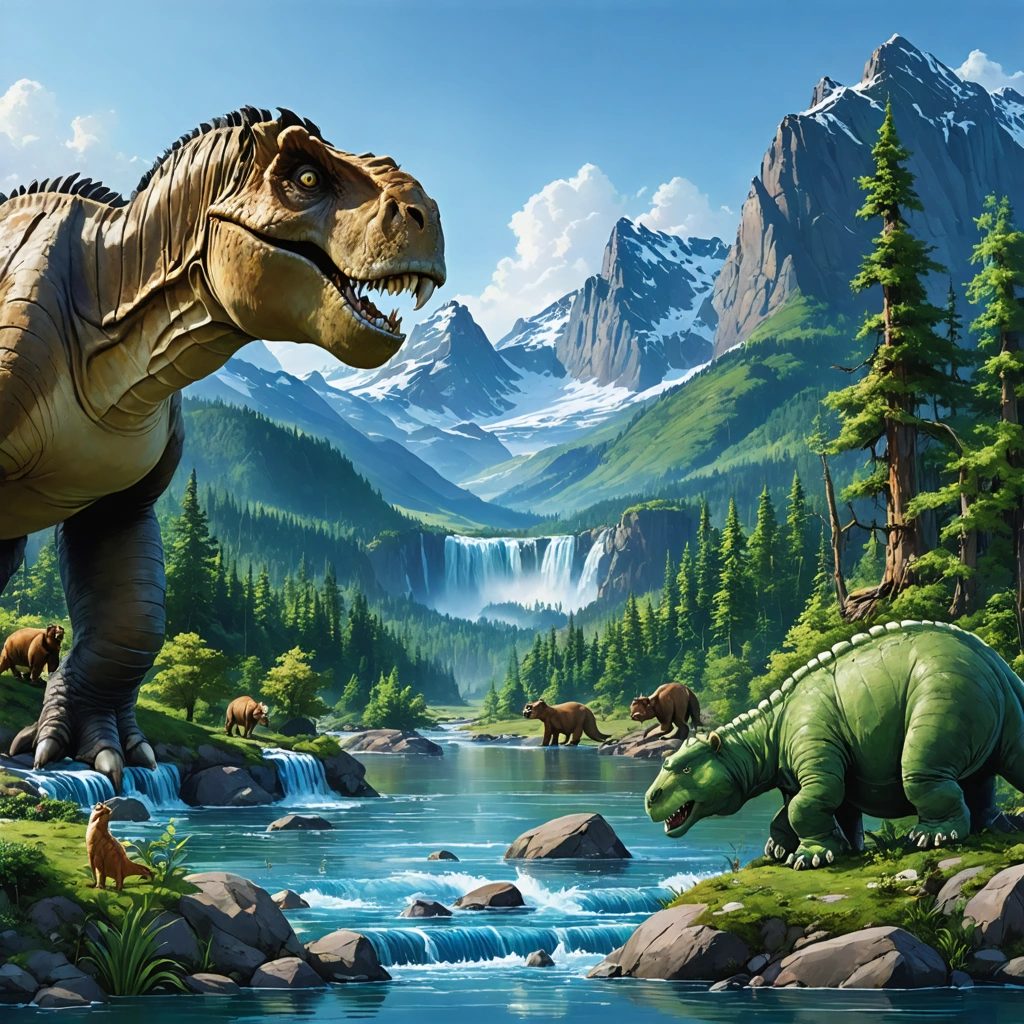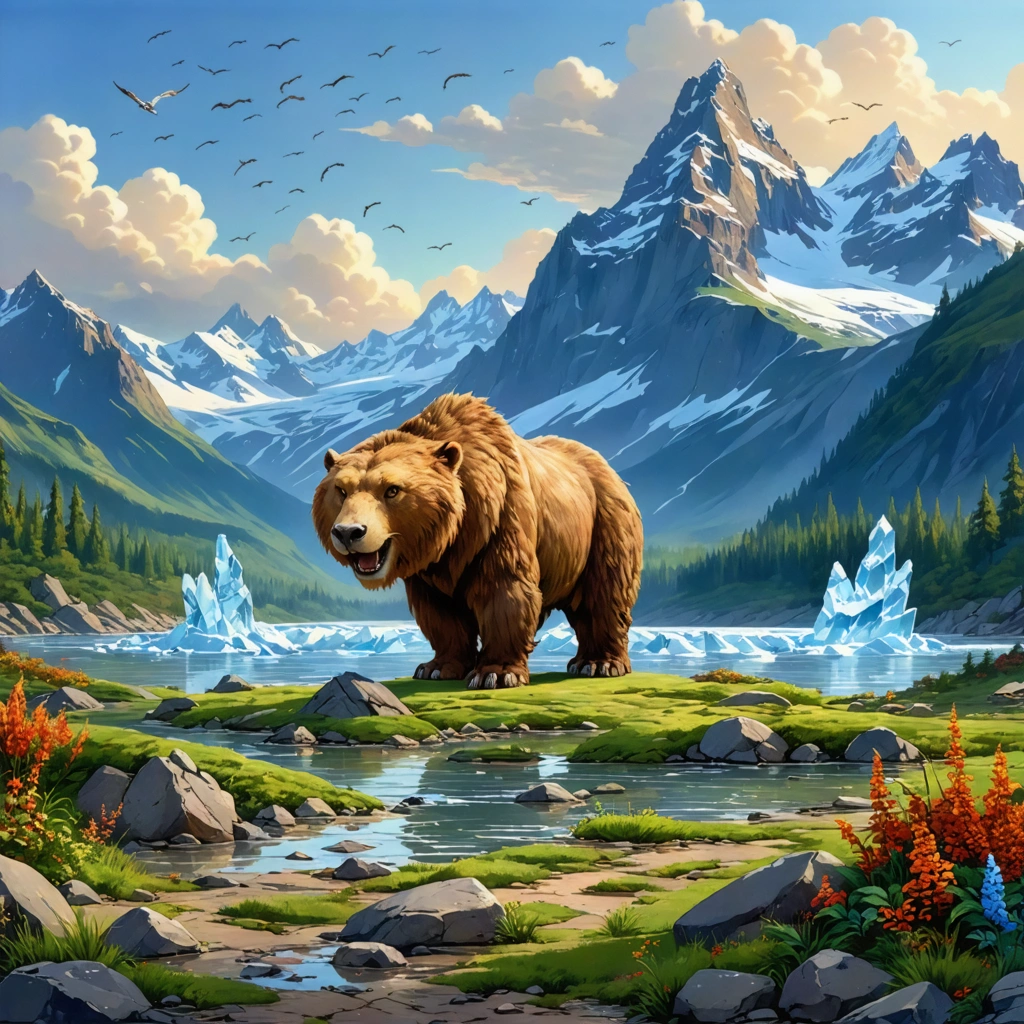
Why Does the Ice Age Still Melt Our Hearts After All These Years?
Think back to the first time you met Manny the mammoth, Sid the sloth, and Diego the saber-toothed tiger. For many of us, that introduction came as a delightful surprise—an unexpected plunge into a world where prehistoric creatures navigate challenges with a blend of humor, heart, and a dash of chaos. It’s no wonder that the Ice Age franchise continues to resonate deeply with audiences of all ages. Yet, amid the avalanche of animated films flooding the market today, you might wonder: how has Ice Age managed to preserve its charm and stay relevant for nearly two decades? What is it about this prehistoric animation that keeps families coming back, eager to join the gang on their latest adventure?
In a landscape where animated features often chase the newest tech gimmicks or edgy storytelling to capture attention, the Ice Age series defies the odds by sticking to what really matters—characters you care about and stories that feel timeless. But the journey to that success wasn’t a simple slide down an icy hill. The challenge was to breathe life into creatures from an era so distant it risks feeling cold and inaccessible to modern audiences. How do you turn extinct animals into relatable heroes? How do you keep the humor fresh while respecting the prehistoric setting?
Tracing the Ice Age in Order: A Journey Through Time and Storytelling
The magic of Ice Age lies not just in its jaw-dropping animation or catchy soundtrack, but in the way it carefully unfolds the prehistoric world with a mix of comedy, emotion, and adventure. By following the ice age in order—from the first film’s focus on survival and unlikely friendships to later installments exploring family dynamics and even time-traveling escapades—the franchise offers something for everyone.
Each chapter builds on what came before, deepening our bond with the characters while introducing fresh challenges that keep the narrative engaging. This progression mirrors a real-life journey, where growth comes from facing change and embracing new experiences. But unlike many series that lose steam as they go, Ice Age remains an entertaining prehistoric animation triumph because it understands the delicate balance between familiarity and innovation.
What Makes the Cast So Lovable?
- Manny: The gruff, protective mammoth with a heart of gold who embodies the struggles of finding family beyond bloodlines.
- Sid: The goofy, irrepressible sloth whose comic relief never feels forced.
- Diego: The fierce yet loyal saber-tooth tiger, proving that even the toughest characters have soft spots.
- Scrat: The relentless squirrel whose obsessive quest for an acorn adds a timeless thread of slapstick hilarity.
These characters aren’t just animated figures; they’re companions through life’s ups and downs. Their prehistoric antics create a bridge across generations, making the Ice Age experience both nostalgic and continuously fresh.
As we embark on this exploration of the Ice Age legacy, we’ll dive into how its prehistoric animation style evolved, why its storytelling remains so compelling, and how the lovable cast has helped the franchise carve out a timeless place in cinematic history. Whether you’re a die-hard fan or a newcomer curious about this frosty phenomenon, there’s plenty to discover about why Ice Age still captures hearts and imaginations worldwide.

Exploring the Enduring Appeal of Ice Age: Prehistoric Animated Fun
What Makes Ice Age’s Lovable Cast Timeless?
The Ice Age film series has captivated audiences worldwide for nearly two decades, largely due to its engaging prehistoric animation and memorable characters. The franchise’s ability to keep its legacy timeless lies in the carefully crafted personalities of its core cast — Manny the mammoth, Sid the sloth, Diego the saber-toothed tiger, and Scrat the saber-toothed squirrel. These characters are designed to be relatable despite their prehistoric context, blending humor, emotion, and distinct quirks that appeal to both children and adults.
Moreover, the animators and storytellers behind Ice Age have maintained a delicate balance between slapstick comedy and heartfelt moments, ensuring the films resonate across generations. The prehistoric animation style, grounded in detailed yet accessible depictions of Ice Age fauna and environments, adds to the immersive experience. This approach has helped the franchise avoid feeling dated despite technological advances in animation.
How Has Ice Age Maintained Its Popularity Over Time?
The franchise’s success is not just about character design but also about strategic storytelling and continuous innovation within the prehistoric animation genre. Each film builds on the previous ones, creating a coherent Ice Age in order narrative arc that keeps audiences invested in the characters' journeys. This serialized storytelling encourages viewers to watch the films in sequence, deepening their emotional connection.
Additionally, the franchise has expanded beyond movies into merchandise, theme park attractions, and spin-offs, which help keep the Ice Age brand visible and relevant. The use of prehistoric animation techniques combined with state-of-the-art CGI also allows the series to evolve visually, catering to contemporary tastes while preserving its original charm.
Why Is Prehistoric Animation Important in the Ice Age Series?
Prehistoric animation is a unique animation style that blends scientific accuracy with creative interpretation, which is a hallmark of the Ice Age films. This style educates audiences about Ice Age animals and environments subtly while entertaining them. The balance of education and entertainment is crucial because it enriches the viewer's experience and promotes interest in natural history and paleontology.
The filmmakers employ extensive research to depict animals and landscapes authentically, yet they anthropomorphize the characters enough to make them engaging and relatable. This approach helps maintain a sense of wonder and respect for prehistoric times, making the films a gateway for younger audiences to learn about Earth's history in an enjoyable way.
What Is the Recommended Viewing Order for Ice Age Films?
Understanding the Ice Age in order is essential for viewers who want to follow the storylines and character development properly. Watching the films in their release sequence helps preserve narrative continuity and maximizes emotional impact:
- Ice Age (2002): Introduces the main characters and the premise of their journey during the Ice Age.
- Ice Age: The Meltdown (2006): Explores environmental changes and introduces new characters.
- Ice Age: Dawn of the Dinosaurs (2009): Adds a prehistoric adventure element with dinosaurs.
- Ice Age: Continental Drift (2012): Focuses on the family unit and new threats from shifting continents.
- Ice Age: Collision Course (2016): Explores cosmic events threatening prehistoric life.
Watching the series in this order allows audiences to appreciate character growth, evolving themes, and technological advancements in prehistoric animation across the franchise’s lifespan.
How Does Ice Age Compare with Other Prehistoric Animation Works?
When compared to other prehistoric animation films or series, Ice Age stands out due to its blend of humor, character-driven narratives, and high-quality visual effects. Unlike more educational or documentary-style prehistoric animations, Ice Age prioritizes storytelling and emotional engagement while still incorporating elements of prehistoric life accurately.
For example, while films like "Walking with Dinosaurs" focus on realistic depictions and scientific accuracy, Ice Age balances this with anthropomorphic characters and fantasy-based plotlines. This makes it more approachable for family audiences and contributes to its widespread popularity.
What Are the Future Prospects for Ice Age and Prehistoric Animation?
The continued success of the Ice Age franchise suggests a strong future for prehistoric animation. Studios are likely to invest further in merging scientific research with innovative animation technologies to create immersive and educational yet entertaining content.
With advances in CGI and VR, future prehistoric animation projects might offer even more interactive experiences, allowing audiences to explore Ice Age environments firsthand. The timelessness of Ice Age’s lovable cast sets a benchmark for character-driven prehistoric stories, inspiring future creators to blend legacy and innovation.
Conclusion
The Ice Age series remains a beloved cornerstone of prehistoric animation due to its captivating characters, engaging storylines, and groundbreaking animation techniques. Understanding the Ice Age in order enhances appreciation of its narrative depth. Meanwhile, the franchise’s blend of education and entertainment ensures its legacy endures, making it a timeless classic that continues to delight audiences across generations.



